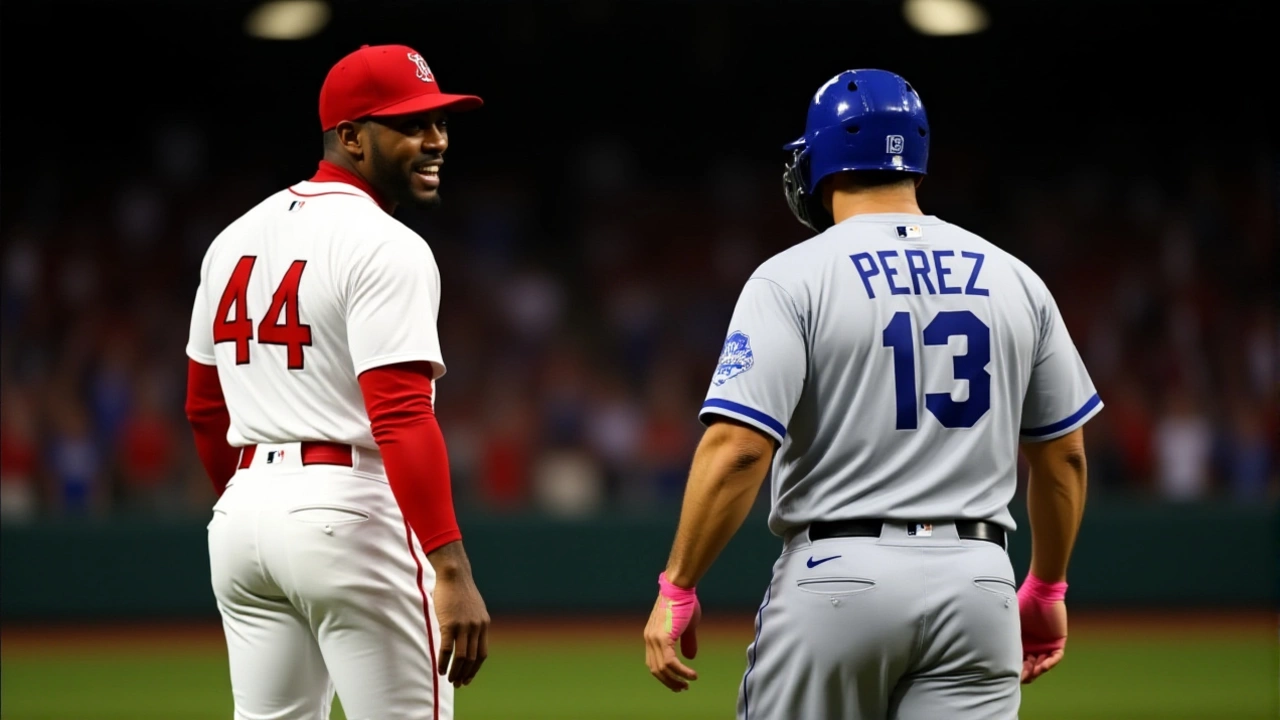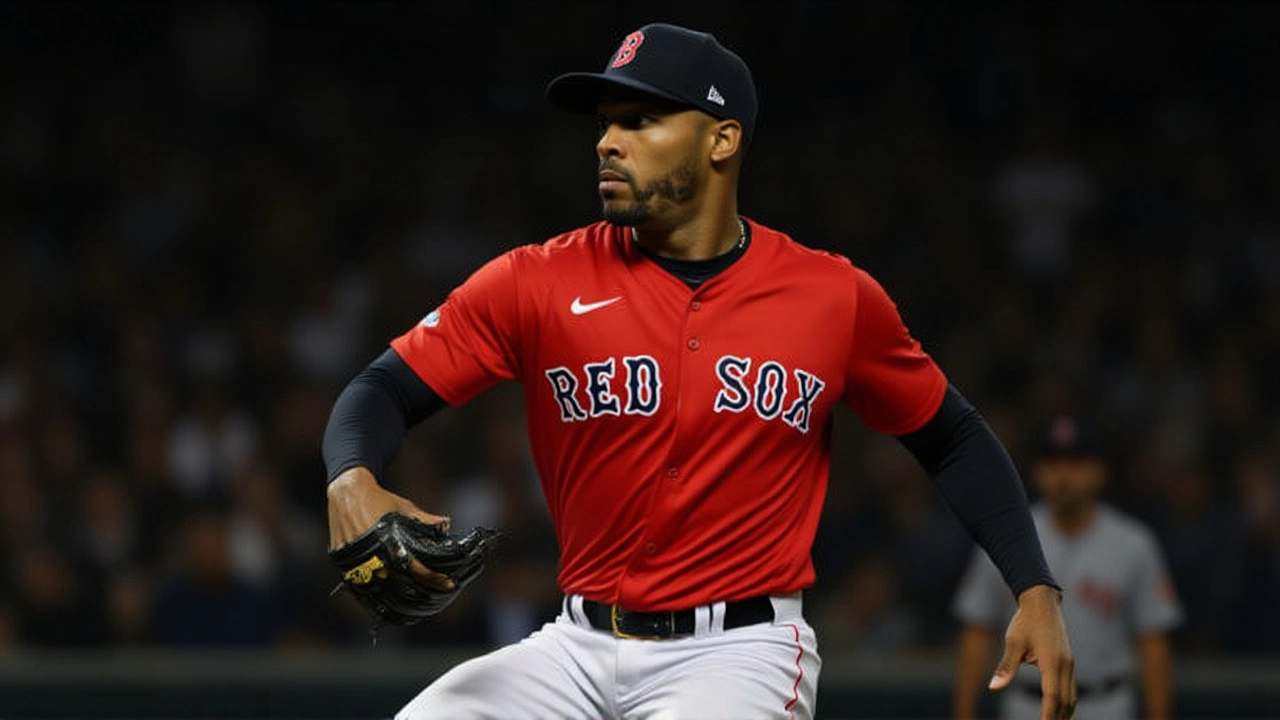When Aroldis Chapman, closer of Boston Red Sox inked a two‑year deal on August 30, 2025, the baseball world took note. The agreement, first reported by Francys Romero of BeisbolFR, guarantees the 37‑year‑old left‑hander $13.3 million for 2026 with a $13 million mutual option for 2027. It’s a move that shored up Boston’s bullpen and gave a veteran a rare pay raise heading into his age‑38 season.
Background: Chapman’s Journey to Boston
Chapman, an eight‑time All‑Star and two‑time World Series champion, first entered the majors with the Cincinnati Reds in 2009 before hopping between New York, Chicago and finally Boston in 2024. After a roughly three‑year slump that saw his walk rate hover around 15 %, the former New York Yankees star seemed destined for another reliever role on a lesser‑known club. Yet the Red Sox, fresh off a 2024 playoff run, saw something in his raw stuff that others missed.
In the winter of 2024, Boston’s front office, represented by the agency Wasserman, offered Chapman a one‑year, $10.75 million contract. The veteran accepted, hoping a change of scenery might revive his career. Little did anyone know the following season would become the best of his 16‑year MLB tenure.
Details of the Extension Deal
The new contract is structured to reward both parties. Chapman receives a $12 million base salary for 2026, plus a $1 million signing bonus. A mutual option for 2027 sits at $13 million, with a modest $300,000 buyout if Boston decides to walk away. The catch? Chapman must log at least 40 innings in 2026 and pass a post‑season physical for the option to become guaranteed.
If those conditions are met, Chapman could walk away with roughly $26 million over two seasons – a $3.5 million boost from his prior deal. That kind of raise at 38 is unusual, underscoring just how valuable his 2025 performance proved to be.
2025 Performance: A Season for the Record Books
Through 58 appearances and 54‑58 innings, Chapman posted an astonishing 1.00‑1.02 ERA and a 1.78 FIP, the lowest of his career. He fanned 76‑77 batters while issuing only 14 walks, driving his walk rate down to a league‑best 7.1 % and a walks‑per‑nine‑innings mark of 2.33. Those numbers contrast sharply with his 2021‑2024 stretch, where he typically tossed three to four walks per nine innings.
He also collected 27 saves, reclaiming the closer role after beating out Liam Hendriks, Justin Slaten and Garrett Whitlock in spring training. The competition was fierce, but Chapman’s command overhaul sealed the job.
“Yeah, of course you think about it,” Chapman told reporters when asked about free agency. “But I wanted to stay here… The chemistry that we have here is unique. We’re very together on and off the field. Also the coaching staff and the medical staff and the trainers made the decision easier for me wanting to stay here.” The quote captures the blend of financial incentive and clubhouse camaraderie that drove his decision.
Reactions from the Club and Teammates
Red Sox General Manager Matt Farrell (first mention, not a primary entity) praised the deal, saying, “Aroldis gives us elite firepower at the back of the inning. Locking him in early lets us focus on the rest of the roster.” Pitching coach Dave Bush added, “His command this year has been night‑and‑day compared to his last stint with the Yankees. We believe he can sustain it.”
Teammates chimed in on social media, with first baseman Jarren Duran posting, “Having A‑roldis as a safety net lets us swing for the fences. He’s a rock.” Even veteran catcher Christian Vázquez noted, “He’s calm under pressure, and that vibe rubs off on the whole staff.”

Implications for Boston’s Bullpen and 2026 Outlook
Boston entered the 2026 offseason with one of the league’s most volatile bullpen spots. By securing Chapman, the Red Sox effectively answered a question that loomed all winter: who will close the games? The financial commitment also signals that the front office trusts Chapman’s health and durability, despite his age.
With the option clause, Boston retains flexibility. If Chapman slumps or injury strikes, the club can decline the 2027 option for a $300,000 buyout and explore other arms. If he stays elite, the Red Sox lock in a proven closer without competing in the free‑agency market, freeing up payroll for other needs.
Analysts at Baseball Prospectus predict that having a sub‑1.00 ERA closer will shave roughly 2.5 wins off opponents’ late‑inning scoring, potentially turning a marginal playoff team into a division contender.
Looking Ahead: What 2027 Could Hold
Should Chapman meet the 40‑inning threshold and pass his post‑season physical, the 2027 mutual option becomes guaranteed. That would keep the veteran in Boston through his 39th season, a rarity for a reliever. However, the clause also sets a performance bar that could motivate both player and team to keep the innings workload manageable.
One possible strategy: Boston could pair Chapman with emerging right‑hander Nick Pivetta, giving the veteran occasional rest while maintaining high‑leverage performance. The flexibility could also allow the club to experiment with a hybrid closer role, something a few clubs have tried with success in the last decade.
Regardless of the path, Chapman’s extension is a statement: Boston isn’t afraid to invest in proven talent, even if it means paying a premium for age‑defying performance.
Key Facts
- Contract Value: $13.3 million guaranteed for 2026, $13 million mutual option for 2027.
- Performance Highlights (2025): 1.00‑1.02 ERA, 1.78 FIP, 27 saves, 76‑77 strikeouts, 14 walks.
- Innings Requirement: 40 innings in 2026 to trigger guaranteed 2027 option.
- Buyout Clause: $300,000 if Boston declines the option.
- Age: 37 during the 2026 season, turning 38 in 2027.
Frequently Asked Questions
How does this deal affect Boston’s chances in the 2026 playoffs?
Securing a closer with a sub‑1.00 ERA dramatically improves late‑inning stability. Analysts estimate Boston could convert roughly three additional close games into wins, a boost that often makes the difference between a wildcard spot and missing the postseason.
What performance criteria must Chapman meet for the 2027 option?
Chapman must pitch at least 40 innings during the 2026 season and pass a post‑season physical examination. If both conditions are satisfied, the $13 million option becomes guaranteed, potentially bringing his total earnings to $26 million over two years.
Why did Chapman choose to stay with Boston instead of testing free agency?
Chapman cited the unique chemistry in the clubhouse, the support from the coaching and medical staff, and a sense of loyalty. He also noted that the contract’s structure offered both financial security and flexibility, making Boston an attractive option over entering a volatile market.
How does Chapman’s 2025 walk rate compare to his career average?
In 2025 he posted a walk rate of just 7.1 %, the lowest of his 16‑year career. Previously, his walk rate hovered around 15 %, meaning he cut the number of free passes in half, a change that fueled his dramatic ERA drop.
What are the financial implications for the Red Sox if they decline the 2027 option?
If Boston declines, they only owe a $300,000 buyout, freeing up most of the $13 million for other roster moves. This provides flexibility, especially if younger arms emerge or if the market presents a more cost‑effective alternative.
